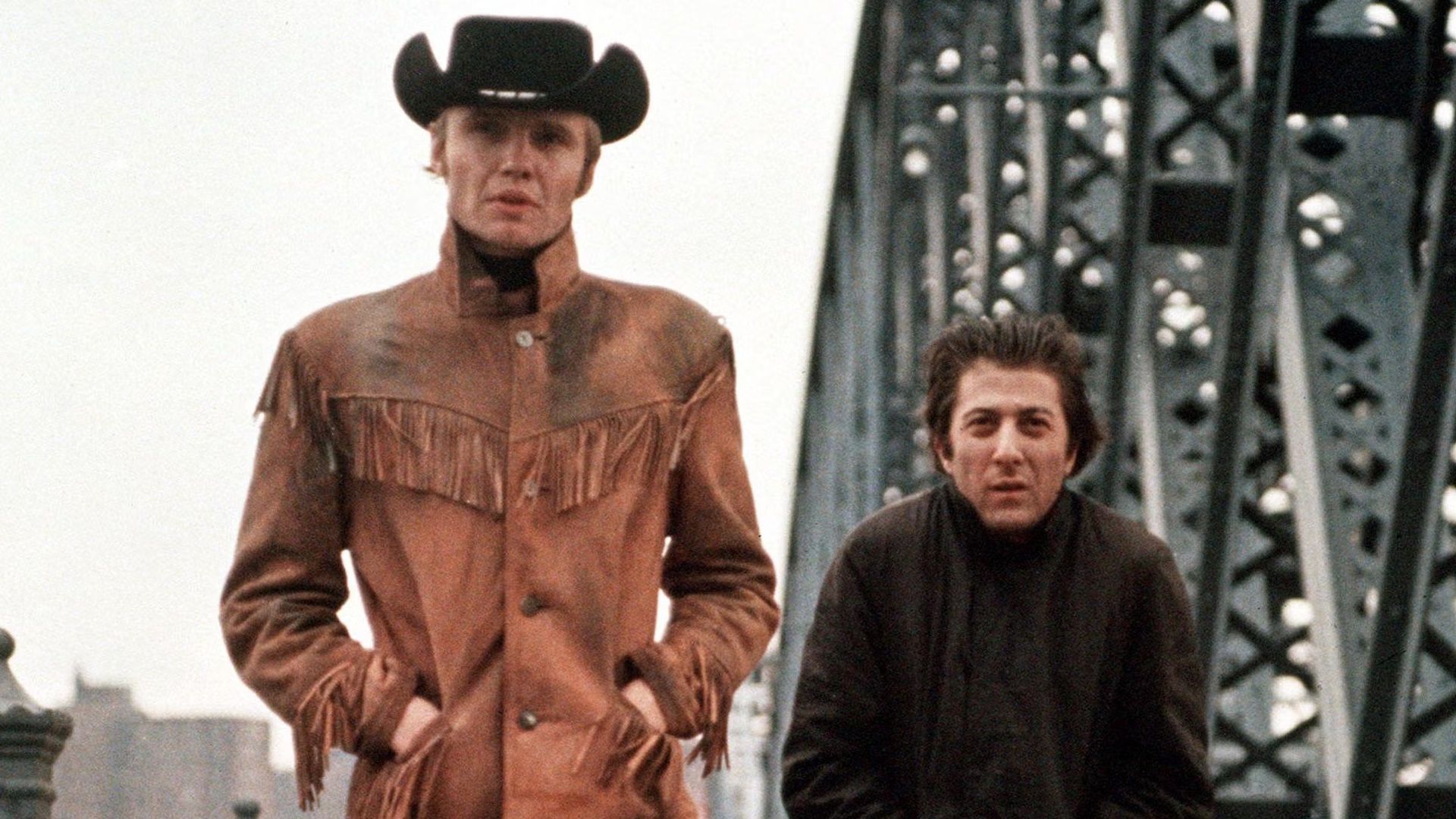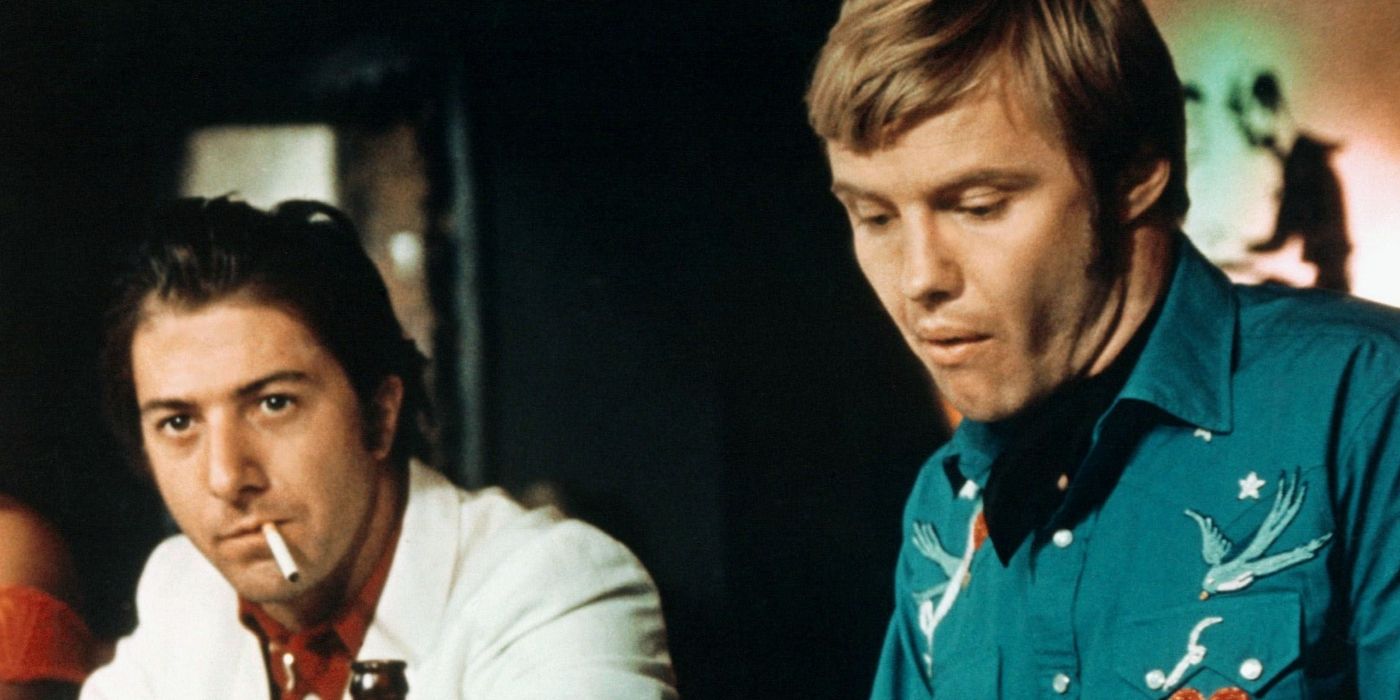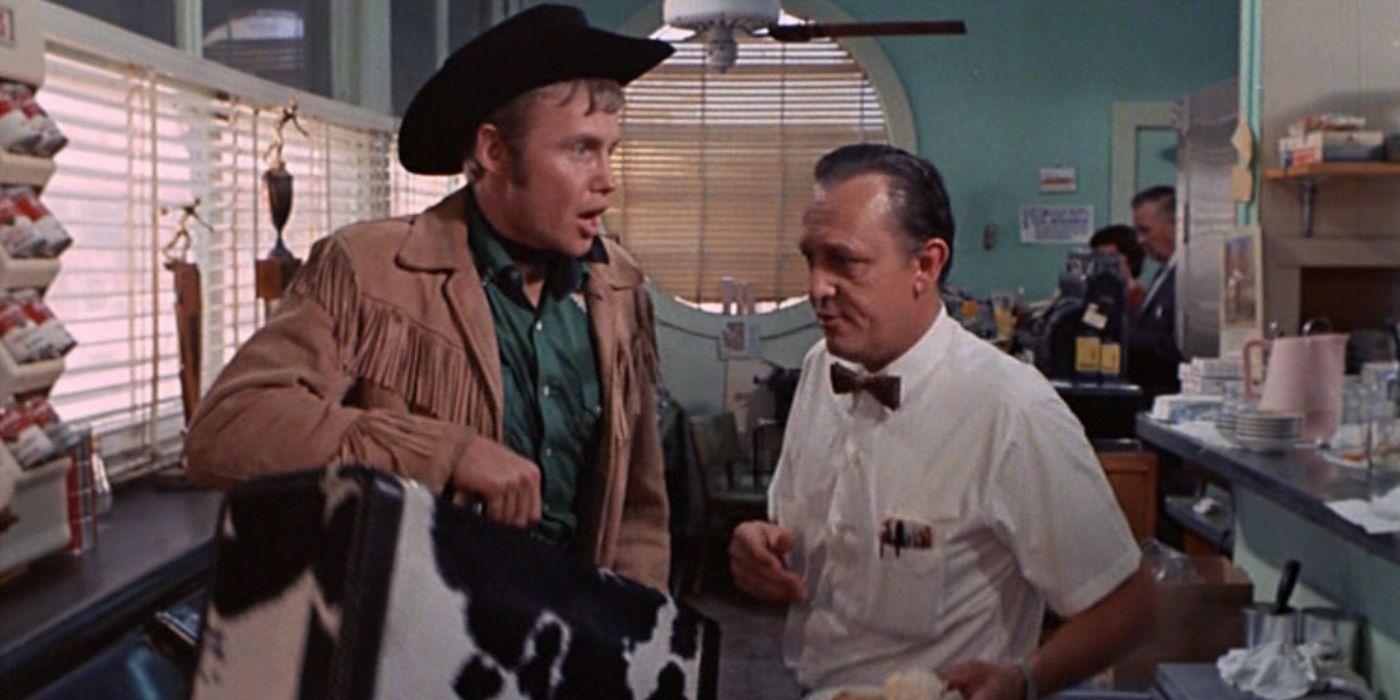
The MPA (formerly the MPAA) has been seen both as a helpful organization needed to maintain standards and shield children, and as a controlling force that often lacks understanding and tends to be overly cautious. Throughout its history, the organization has sometimes been unfair, for instance, by giving stricter ratings to films that don’t follow traditional relationship norms or arbitrarily labeling horror movies with restrictive ratings. These actions suggest the board has occasionally overstepped its authority or demonstrated bias.
It’s probably true that the MPA’s decisions aren’t always clear-cut, but people often enjoy seeing films that faced censorship or restrictions ultimately become famous because of those limitations. A perfect example is the highly praised 1969 drama, Midnight Cowboy.
The Excitement Behind the Scenes for ‘Midnight Cowboy’ Did Not Save It From Controversy

United Artists
A recent look back at the film Midnight Cowboy, featuring conversations with those involved, revealed that many believed it would be a turning point in their careers. This expectation stemmed from the initial excitement surrounding James Leo Herlihy’s novel, and the fact that screenwriter Waldo Salt was considered perfectly suited to adapt its complex story and writing style. Director John Schlesinger, newly arrived in American filmmaking after success in Britain, also hoped to make a significant impact, and saw the story as a perfect opportunity. Dustin Hoffman, eager to move beyond his popular role in The Graduate, committed himself completely to playing Enrico “Ratso” Rizzo – a performance still considered one of his best. The film also marked Jon Voight’s first major role as Joe Buck.
The film masterfully combined all its elements to create a raw, yet deeply human story, largely focused on the connection between the characters Ratso and Buck. It was groundbreaking for its time, exploring themes of male vulnerability and isolation in the city, and influenced many films that followed in the 1970s. Midnight Cowboy was a rare success, bringing together a talented cast and crew who dared to break from traditional filmmaking, captivating audiences and earning significant profits. Despite this, the film received an X rating due to its mature themes – including depictions of sexuality and male prostitution, its unconventional, anti-hero narrative style, and its portrayal of drug use – which often meant certain doom for a film’s theatrical release, and especially its chances at awards.
‘Midnight Cowboy’ Was Slapped With an X-Rating but Managed To Persevere

United Artists
The ‘X’ rating caused several problems. The MPA didn’t legally protect the term, and while they intended it to mean ‘adults only,’ others – especially those making pornography – exploited it with the ‘XXX’ label for attention. Jack Valenti, head of the MPA, discussed this with Roger Ebert when announcing the new NC-17 rating. As a result, the public often assumed an ‘X’-rated movie was pornographic, limiting its distribution to smaller, art-house cinemas and restricting its advertising in newspapers.
Many films released around the same time as Midnight Cowboy initially struggled, but are now considered classics – like A Clockwork Orange and The Devils. Even The Wild Bunch almost received an X rating, but the studio managed to keep it at R. Despite the risks associated with an X rating, United Artists boldly gave Midnight Cowboy a wide release in theaters.
The film debuted in New York and Los Angeles in May 1969 and quickly became incredibly popular, spreading by enthusiastic recommendations. It grossed $44 to $45 million worldwide, despite only costing $3.2 million to make. This level of success was remarkable for a movie with an X-rating, and it continued to gain recognition with awards, further questioning the relevance of that rating.
‘Midnight Cowboy’ Oscar Win Was a One-of-a-Kind That Should Have Never Happened

MGM
Because of the strong social stigma and consequences associated with an X rating, movies with that label were generally excluded from Oscar consideration. However, Midnight Cowboy remarkably received eight nominations and won three awards – Best Picture, Best Director (John Schlesinger), and Best Adapted Screenplay (Waldo Salt). This makes it the only X-rated film (or its modern equivalent, NC-17) to ever win an Oscar. While A Clockwork Orange and Last Tango in Paris both received nominations, neither of them ultimately won any awards.
The success of the film created a problem for the MPA, as its X rating limited who could see it. Despite this, the film was popular with both audiences and critics, revealing a lack of subtlety in the rating system. Shortly after, in 1971, the MPA re-rated Midnight Cowboy as R (without requiring any changes), a small win given the many flaws that have plagued the ratings board throughout its history. The positive reception of Midnight Cowboy paved the way for the creation of the NC-17 rating, which, while still facing distribution issues, clearly separates adult films from pornography and likely encouraged the board to be more thoughtful in its decisions to avoid similar criticism.
Despite its mature themes, Midnight Cowboy has maintained an R rating. While it originally received an X rating from the MPA, watching it now shows how questionable that decision was, though it’s easier to see that with the benefit of time. This film is a true masterpiece that remains powerful and relevant today – it’s much more than just a historical artifact. You can currently stream Midnight Cowboy on The Roku Channel, Tubi, and Kanopy.
Read More
- Золото прогноз
- The Most Controversial Isekai Anime of the Year Was Much Better as a Light Novel
- 007 Rumor Reveals Amazon MGM’s Favorite for Next James Bond Actor
- Brett Goldstein Explained Why He Wrote A Rom-Com For JLo, And Of Course It Involved A Few Curse Words
- Прогноз нефти
- Доллар обгонит канадский доллар? Эксперты раскрыли неожиданный сценарий
- Прогноз криптовалюты NEAR: прогнозы цены NEAR
- Сургутнефтегаз префы прогноз. Цена префов SNGSP
- DC Reintroduces Darkseid in Mister Miracle Animated Series Under Direction of Tom King, DCU Status Uncertain
- Серебро прогноз
2025-11-16 21:33